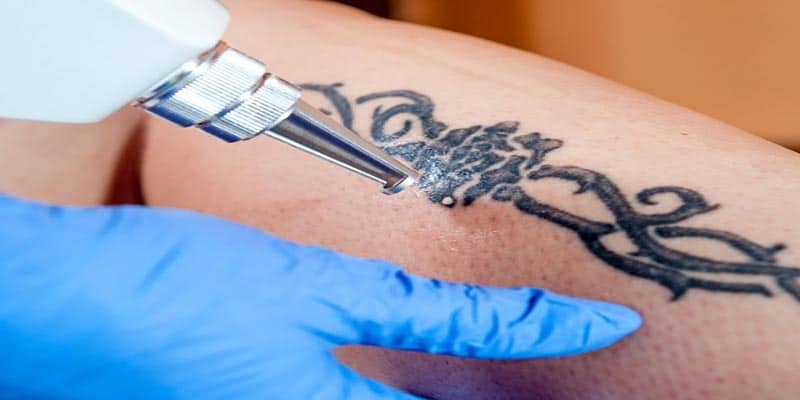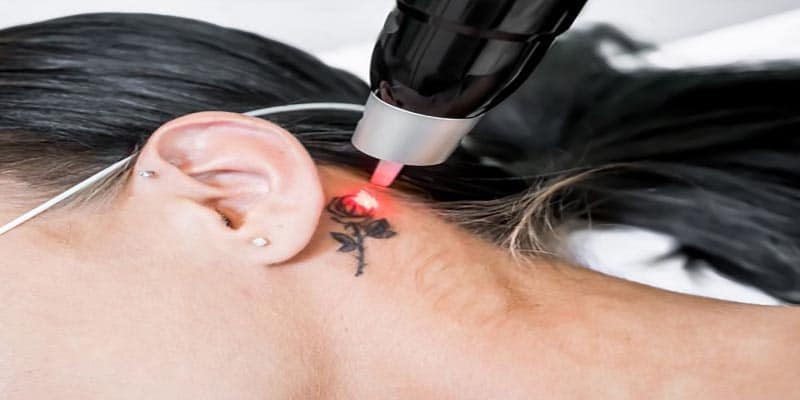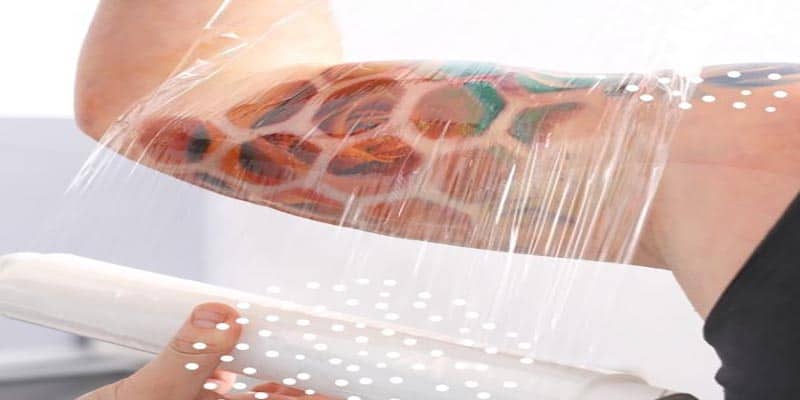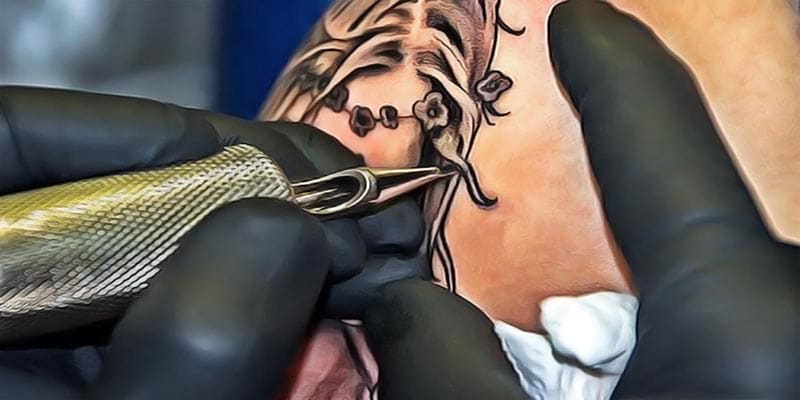Contrary to what a lot of people think, tattoos are not completely permanent. They can be removed, though it can be time-consuming and expensive to do so. If you made the age-old mistake of inking an old partner’s name onto your skin, or you’re just getting tired of a specific tattoo, here’s what you need to know about laser tattoo removal.
Laser Tattoo Removal and Your Skin
There are a lot of factors that go into the efficacy of laser tattoo removal, but one of the biggest is skin tone and skin condition. For people with lighter skin tones, laser tattoo removal tends to be a faster process, because their skin doesn’t absorb the laser as much and isn’t as likely to become discolored.
However, this doesn’t mean that those with darker skin tones can’t get their tattoos removed. It simply means that it may take longer and require more sessions so that the skin doesn’t get damaged.
The same is true for people with skin conditions like eczema. You can still get tattoos removed with a laser, but in order to avoid scarring, discoloration, or a bad skin reaction, the laser specialist will probably need to go a little slower and space the sessions out more.
How Skin Can Be Affected by Laser Tattoo Removal
While anyone who goes in for laser tattoo removal could experience some irritation or even scar in the area where the tattoo was, people with darker skin tones are at a higher risk for these and other side effects. This is because darker skin contains more melanin, which will absorb light and heat from the laser.
For lighter-skinned folks, there’s a bigger contrast between the color of the skin and the color of the ink, this means the heat and light of the laser are mostly absorbed by the ink and don’t diffuse into the un-inked skin around the tattoo.
Dark skin, in comparison, can absorb just as much or more heat than the ink because the color of the skin and the ink are likely to be more similar. In extreme cases, with a technician who is inexperienced, this can cause burning, keloid scars, or discoloration. This discoloration is known as hyperpigmentation or hypopigmentation.
Hyperpigmentation is when an area of skin becomes darker than the space around it, while hypopigmentation is when the natural pigments of your skin are removed from an area and the skin gets lighter.
Luckily, this result is relatively easy to avoid with the right equipment and patience. Most laser tattoo removal facilities are outfitted with a wide range of laser types which are especially suited for removing ink from many skin types. For people with darker skin, the specialist will need to use a lower laser setting to avoid doing damage to the skin itself.

As you might expect, a lower laser setting means that it will take longer for the ink to go away. Also, most technicians will advise waiting longer between laser sessions to make sure the skin has fully healed before treating it again. This is all to ensure that you stay safe and don’t receive any lasting adverse effects from the laser treatment.
Other Factors that Affect How Long Laser Tattoo Removal Will Take
In addition to different skin tones requiring different types of lasers and numbers of sessions, the intricacy and complexity of the tattoo itself will also change how long it will take for the tattoo to go away completely.
On one end of the spectrum are the small, one-color tattoos, particularly if they’re just done with black ink. Black ink is the easiest to remove. But even these simpler tattoos will still take a while to make disappear. Small, one-color tattoos still require around 5 sessions to remove on average, though this may change depending on factors like your skin tone or condition, as we’ve already discussed.
At the other end are big tattoos that involve many different colors. In particular, colors like light blue and green are some of the hardest ink colors to remove, and in some cases, it may never completely disappear, though it will get harder to see.
If you want to remove a big tattoo that involves a lot of colors, you can probably expect to get around ten laser treatment sessions before it’s gone, possibly more.
The age of the tattoo will also change how many sessions of laser treatment you’ll need. As you probably already know if you’ve had a tattoo for a long time, the colors in a tattoo are much more vibrant when they’re new than they are years later.
If the tattoo you want to remove is one you got many years ago and it’s already faded naturally, getting the ink to go away completely will be a lot easier. Newer tattoos will require more sessions.
Why Laser Tattoo Removal Is the Best Choice for Every Skin Type
It may seem annoying that removing a tattoo with lasers takes so long, and perhaps you’re thinking it would be easier to use some other removal method, such as getting it surgically removed instead. In the long run, though, laser removal is the safest tattoo removal method out there.
We’ve discussed some of the potential risks of laser tattoo removal, particularly for those with darker skin tones. But the reality is that, as long as you go to an experienced tattoo removal specialist who knows what laser setting to use and what safety precautions to take, you shouldn’t have to worry about most of these side effects happening.
The same can’t always be said for other methods of tattoo removal. Surgical removal, for example, will nearly always result in a scar and can take several weeks to heal. Laser removal requires no sharp instruments, and while it could still scar, it’s very rare.
You should make sure to do your research before committing to any tattoo removal method. We hope this article has helped you make your decision.






